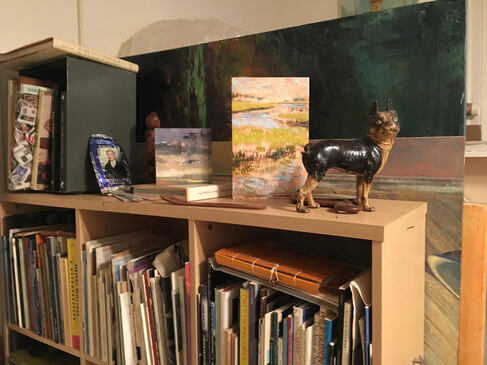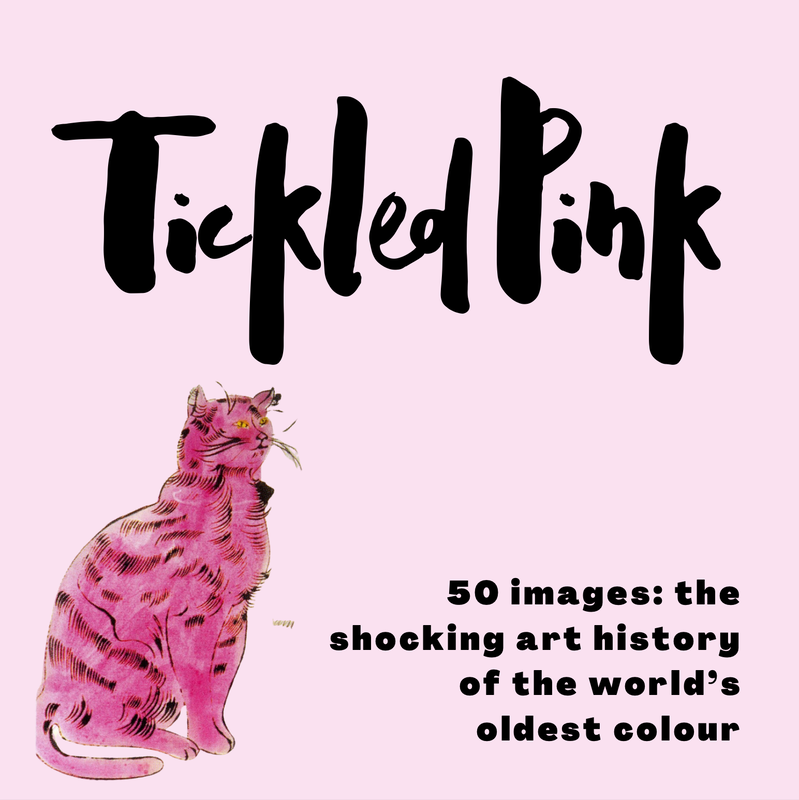|
Penumbra: an Ekphrastic Collaboration Last summer, artist Linda Fantuzzo and I embarked on an interesting ekphrastic process. I’ve known Linda since the late 1970s, when I worked at the Gibbes art museum in Charleston, SC. Her work was peerless then, and now she’s got the skills of a lifetime. I spent twenty years in Los Angeles, and returned to Charleston with my husband, poet Richard Garcia. Soon thereafter, Linda and I reconnected over art, film, and literature, and often wondered if we should try an ekphrastic collaboration. Linda has contemplated the South Carolina Lowcountry's physical, social, and emotional landscape for a long time, and her images are at once accessible and poetic. When she was preparing landscapes for a three-city exhibition, she asked if I’d like to respond to the paintings in poetry, and perhaps include broadsides in the show. There were already a number of completed works, and the work was so intriguing that I thought it would be good to invite others to join in. I know many fine poets practicing in Charleston who write ekphrastic work, and was excited to see what others would come up with. Most of the participating poets are from The Long Table, a group meeting continuously at Richard’s and my house since 2004 to study and generate poems. Richard earned an MFA at Warren Wilson College after receiving a supportive letter in mid-life by Octavio Paz, and has so far authored seven volumes of poetry. Several poets in the group are professional writers and teachers, have MFAs and poetic distinctions of their own, and practice other art forms. Some of the earliest members still meet, and we have a Facebook group where those who moved on can share poems and news. We support one another’s efforts and know one another’s work well. We also invited some who are private students of Richard’s, or friends of Linda’s and ours. Twelve of us met at Linda’s studio twice to view and discuss the paintings and draft poems. The works in Penumbra lend themselves especially well to poetry. They concern light and darkness, openings between inside and outside, and ruined or mysterious structures that connote both presence and absence. The particular landscape elements—sky, ladders, water, walls, earth, stairs, doors, gates, windows—are what poets call deep images—especially resonant, fertile, evocative words that start generating lines of poetry almost immediately. Then we have Linda’s marvelous, loose brushwork, vivid colour combinations, and contrasting shadow and light, all setting a dreamlike stage for imaginative play. In several paintings, she leaned imaginary ladders up against ruined walls; Richard thought about how far up or down they could take us, other art he’s seen involving ladders, and the ways ladders and walls have been in the news. Riffing on a long-vacant courtyard, Maria pictured her speaker wandering into enemy territory. Yvette invoked the enslaved builders of a fallen-down mansion. Considering an unfurnished antebellum room, Ed told a story about the family that had to move out. And so on. The most basic level of ekphrasis is simple description, normally not of original objects, but known art, much-reproduced. Beyond that, the use of any artistic image may push poets to operate in foreign-but-familiar territory, giving us an experience like travel—taking us out of our own lives to see into another’s, perhaps even across time. Meeting in Linda's studio together as a group was actual travel to a strange place, since our meetings have been mostly at my home. Immersed in the smells of turpentine and linseed oil, surrounded by large canvases either completed or nearly so, we conceived our poems in the exact same space, as Linda noted, in which she had created her paintings. Her workplace is filled with luscious art and fascinating items of all sorts—the kind of room that makes an artist want to set up random objects in a still life for the millionth time, seeking something fresh to express. Poetry thrives on the juxtaposition of random images in the same way, to find new ways to say the same old things. It was especially interesting to hear wildly different treatments of a single painting, since we all bring our own memories, imaginations, and skills to the work. Linda had worked alone for over two years with little feedback from anyone, and during our meetings she shared in the stillness of our writing-time and then the animated conversation on our drafts, and what she called our “positive critique”. She said, “though their poems did not necessarily alter my own interpretations of these paintings, I loved their new perceptions of the artworks, and I do see the images in a new light.” Our ideas, she says, “were sensitive, deeply considered, and a genuine response to my paintings. Their art made me confident that my own art had spoken to others in a profound way. I could not have anticipated just how rewarding this union would be.” The thing about ekphrastic practice is that, like artists, poets often start with the objects that surround them, looking to reimagine their world. When we poets start with an art image, already made with an artist’s eye and hand to stand for something else, the writing makes us work forward into whatever surprise awaits. Beginning with an object that’s already imaginary, the writing gets spooky pretty fast, so working from art is sort of easy money. The term “ekphrasis” applies to an artistic response, in any genre, to work in a different genre. What’s special about the case of poets and painters is, our respective processes mirror each other. A poet’s usual approach is to juxtapose words to create images in the mind—images that may stand for something else. Conversely, painters make images, often standing for something else, and that something occurs to the mind in words. That mirroring sets up a jazzy counterpoint that seldom fails to augment the themes in question. In the case of Penumbra, we found ourselves extending the metaphors in Linda’s paintings, and our lines resonating with one another’s in new and unexpected ways. Katherine Williams Note: Some of the paintings from Penumbra are here: https://lindafantuzzo.com/greenville_2019.html Penumbra poems throughout The Ekphrastic Review: http://www.ekphrastic.net/ekphrastic/trees-by-richard-garcia http://www.ekphrastic.net/ekphrastic/dark-is-the-night-by-katherine-williams http://www.ekphrastic.net/ekphrastic/the-next-people-by-ed-gold http://www.ekphrastic.net/ekphrastic/at-the-gate-by-ed-gold http://www.ekphrastic.net/ekphrastic/outside-the-walls-by-ed-gold http://www.ekphrastic.net/ekphrastic/interior-access-by-maria-martin Other poems by group members: http://www.ekphrastic.net/ekphrastic/firefly-by-kit-loney http://www.ekphrastic.net/ekphrastic/la-tortillera-by-richard-garcia http://www.ekphrastic.net/ekphrastic/sister-gertrude-by-richard-garcia http://www.ekphrastic.net/ekphrastic/portrait-of-helen-by-helen-brandenburg Katherine Williams has published four chap books and read at venues from the L.A. Poetry Festival to the College of Charleston. A Pushcart and Best of the Web nominee, she has poems in Spillway, Projector, South Carolina Review, Measure, and elsewhere. She is a retired biomedical research technician living on James Island, SC. www.katherinewilliams.infowww.katherinewilliams.info
1 Comment
Kristi Ryba
1/11/2020 04:03:25 pm
This is so great Katherine! I just love your writing. See you Friday!
Reply
Your comment will be posted after it is approved.
Leave a Reply. |
The Ekphrastic Review
COOKIES/PRIVACY
This site uses cookies to deliver your best navigation experience this time and next. Continuing here means you consent to cookies. Thank you. Join us on Facebook:
Tickled Pink Contest
April 2024
|









